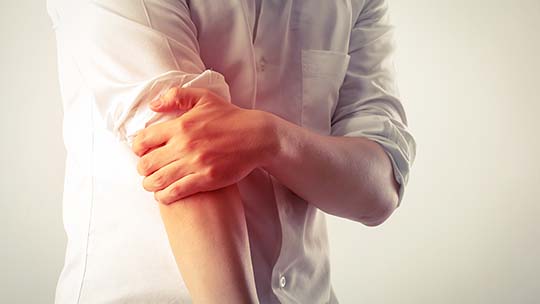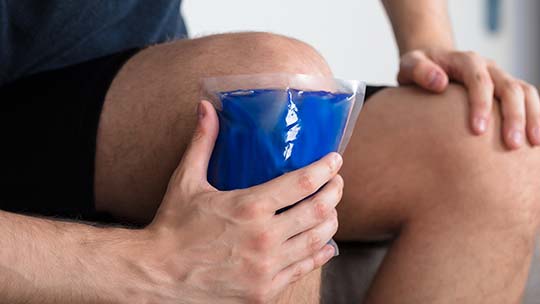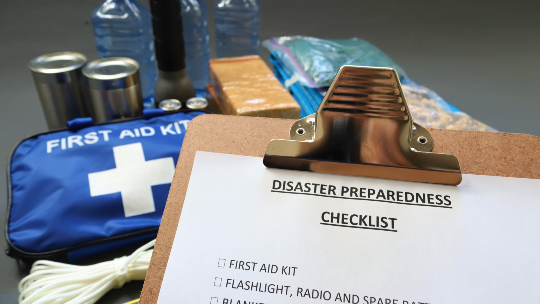One morning, you wake up feeling “creaky.” Your knees, elbows, and hands seem a bit stiff. The next day, your knees are swollen. You wonder, “What’s happening to my body?” You might be one of 27 million Americans who have arthritis.
What is arthritis?
“Arthritis,” Cedric Akau, M.D., explains, “is an abnormal condition affecting your joints, which are the areas of your body where bones meet to allow movement.” Dr. Akau is a physiatrist with the Hawai`i Pacific Health Medical Group.
Are there different types of arthritis?
There are two types of arthritis according to Dr. Akau, who also serves as associate clinical professor and chief of the Division of Physical Medicine and Rehabilitation at the University of Hawai‘i John A. Burns School of Medicine. “While both inhibit the proper functioning of our bodies, the causes are very different. Osteoarthritis is the most common noninflammatory arthritis and results from the wear and tear of the joints. The other category of inflammatory arthritis includes diseases related to autoimmune conditions such as rheumatoid and psoriatic arthritis and crystal arthropathies like gout or pseudo-gout.”

What causes osteoarthritis?
Osteoarthritis is generally associated with aging and weight gain. However, professional athletes or individuals who perform repetitive tasks can experience osteoarthritis at an earlier age due to a traumatic injury or constant overuse of certain areas of their bodies. With rheumatoid arthritis, the body’s immune system mistakenly starts to attack itself, thinking it’s under some kind of threat.
How do I know if I have osteoarthritis?
“Pain is the most common symptom, but it can be accompanied by stiffness, swelling, joint tenderness, or ‘grating’ sensations,” Dr. Akau says. A thorough review of your medical history, physical examination, and X-rays can quickly reveal whether arthritis is affecting your joints.
Is there a cure for osteoarthritis?
“Unfortunately, there’s no cure at this time despite the claims of supplements and various treatments. But there are many steps you can take to improve your condition and help you move better,” Dr. Akau says. “In addition to maintaining an ideal weight, it’s important to keep moving the affected joint and to strengthen the muscles surrounding the joint. There are all kinds of exercise programs, including aquatic ones and tai chi that are extremely beneficial.”

What can I do when I first notice a painful joint?
“P-R-I-C-E,” says Dr. Akau. “This involves protecting the joint, resting and rehabilitation, icing, compression, and elevation. Little things done consistently can make a big difference in how you live with arthritis.”
Here’s a breakdown of the treatment referred to as “P-R-I-C-E”:
Protect the joint. If your right knee is sore, use a cane on your left side. Go upstairs leading with your good leg; go downstairs leading with the one that hurts and is difficult to bend. Over the long term, consider weight loss, which may include changing your diet. Avoid processed foods and choose healthy anti-inflammatory foods such as soybeans, avocadoes, pineapple, fish, and curries made with ginger and red chili peppers.
Rest and rehabilitate. If you don’t move the affected joint, it will become stiffer and more painful, which makes it less likely you are to move. This vicious cycle can be broken with rehabilitation and muscle strengthening.
Ice helps decrease inflammation, which in turn decreases pain. Ice should not be applied directly to the skin and for no more than 15 to 20 minutes at a time.
Compress. When you develop a painful joint, wearing a brace or other supportive device can be helpful. Over the long term, the best brace is strengthening the muscles around the joint.
Elevate the affected joint to the level of the heart or higher to help decrease swelling.

Where can I learn more about osteoarthritis?
It’s important to discuss the evaluation and treatment of osteoarthritis with your primary care provider. Your PCP may start treatment with medication and physical therapy or refer you to a specialist in physical medicine and rehabilitation or rheumatology.
To learn more about osteoarthritis, visit these websites:
- Arthritis Foundation
- UpToDate
- Centers for Disease Control and Prevention
- American College of Rheumatology
- American Academy of Physical Medicine and Rehabilitation
Leslie A. Hayashi is an author, educator, artist, and retired judge.




